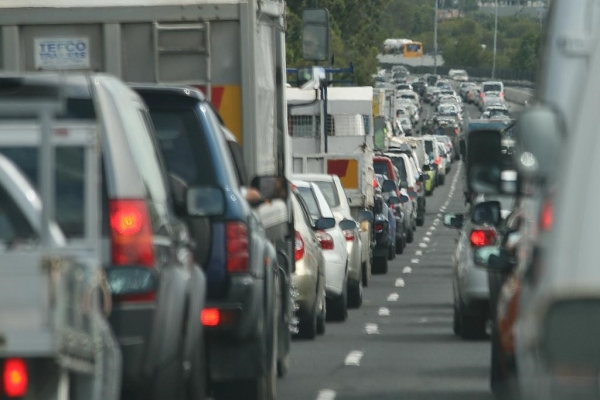The video begins at 4:13.
Wei Feng: Impacts of Economic, Technological and Operational Factors on the Economic Competitiveness of Electric Commercial Vehicles in Fleet Replacement Decisions
Electric commercial vehicles (ECV) have the potential to substantially reduce greenhouse gas emissions, noise, and pollution in urban areas. In addition, ECVs have lower per-mile operating costs and potentially lower maintenance costs. However, the initial purchase cost of ECVs is significantly higher than the purchase cost of a conventional diesel vehicle. From a purely economic perspective, there is a cost tradeoff between the low operating and maintenance costs of ECVs and their high initial capital costs. In this paper, a fleet replacement optimization framework is employed to analyze the competitiveness of ECVs. Scenarios with different fleet utilization, fuel efficiency and sensitivity analysis of ten additional factors indicate that ECVs are more cost effective when conventional diesel vehicles’ fuel efficiency is low (8.2 miles/gallon) and daily utilization is more than 54 miles. Breakeven values of some key economic and technological factors that separate the competitiveness between ECVs and conventional diesel vehicles are calculated in all scenarios. For example, in low conventional diesel vehicle fuel efficiency and low daily utilization scenario, ECVs are more competitive when their purchase prices...
Read moreThe video begins at 2:51.
Abstract: Coal-fired electricity plants account for over 50 percent of the nation’s electricity. These plants can purchase coal from a large number of different locations and, often, can have a number of different transportation options. Normally, however, from the array of different options, they use only a handful. We frame the model as that of a cost-minimization with a large number of input choices, characterized by standard Kuhn-Tucker conditions. Empirically, we estimate a system of input decisions that contain both zero and non-zero levels, using a Multiple Discrete/Continuous Extreme Value model. The payoffs from each choice are a function of costs, coal attributes, and unobserved modal attributes, as well as the increased regulation under the Clean Air Amendment Act of 1990.
The video begins at 2:55.
With the advent of the alternative fuels, it’s very appropriate that gasoline is based on fossil fuels and becoming ancient history. As the gas tax becomes less and less pertinent to adequately funding infrastructure, electronic cashless non-stop tolling options are a more viable solution to financing new projects and providing mobility to existing infrastructure. There are a number of technologies being evaluated for the future; including global position systems (GPS), existing proprietary radio frequency (RF) systems, open standard dedicated open standard dedicated short range communications (DSRC) systems, or the existing cellular networks are also being considered. This presentation will focus on what technologies are available and what emerging technologies are the most likely to emerge as an effective and affordable approach to funding user fees and infrastructure needs. This presentation will also describe how user fees and tolling systems can help the environment, reduce congestion, and provide effective cashless transportation systems based on equitable user fees.
View slides
If you would like to receive continuing education credits such as PDH or CM, please make sure to complete this evaluation form once you've watched the entire video so that we have a record of your attendance.
Watch video:
Transportation accounts for approximately 33 percent of greenhouse...
Read moreThe video begins at 1:49.
Abstract: Policy-makers, researchers, and activists often assume that traffic congestion mitigation results in reduced motor vehicle emissions without proper justification or quantification. This research investigates under which conditions that assumption is valid by comparing trade-offs between increased efficiency and induced travel. Analyses include investigation of varying vehicle fleets - including advanced-drivetrain vehicles. Results demonstrate that higher levels of congestion do not necessarily increase emissions, nor will congestion mitigation inevitably reduce emissions. These results apply for both roadway capacity expansions and traffic flow improvement projects. We compare the emissions effects of various congestion and emissions mitigation strategies, with particular attention to the roll of trucks and the potential of truck-only facilities. Congestion performance measures are also compared for applicability to emissions trends.
View slides
Watch video:
The City of Portland is exploring how distributed “Internet of Things” (IoT) sensor systems can be used to improve the available data that is usable by city engineers, planners, and the public to help inform transportation operations, enable assessments of public health and equity, advance Portland’s Climate Action Plan goals, and...
Read more
